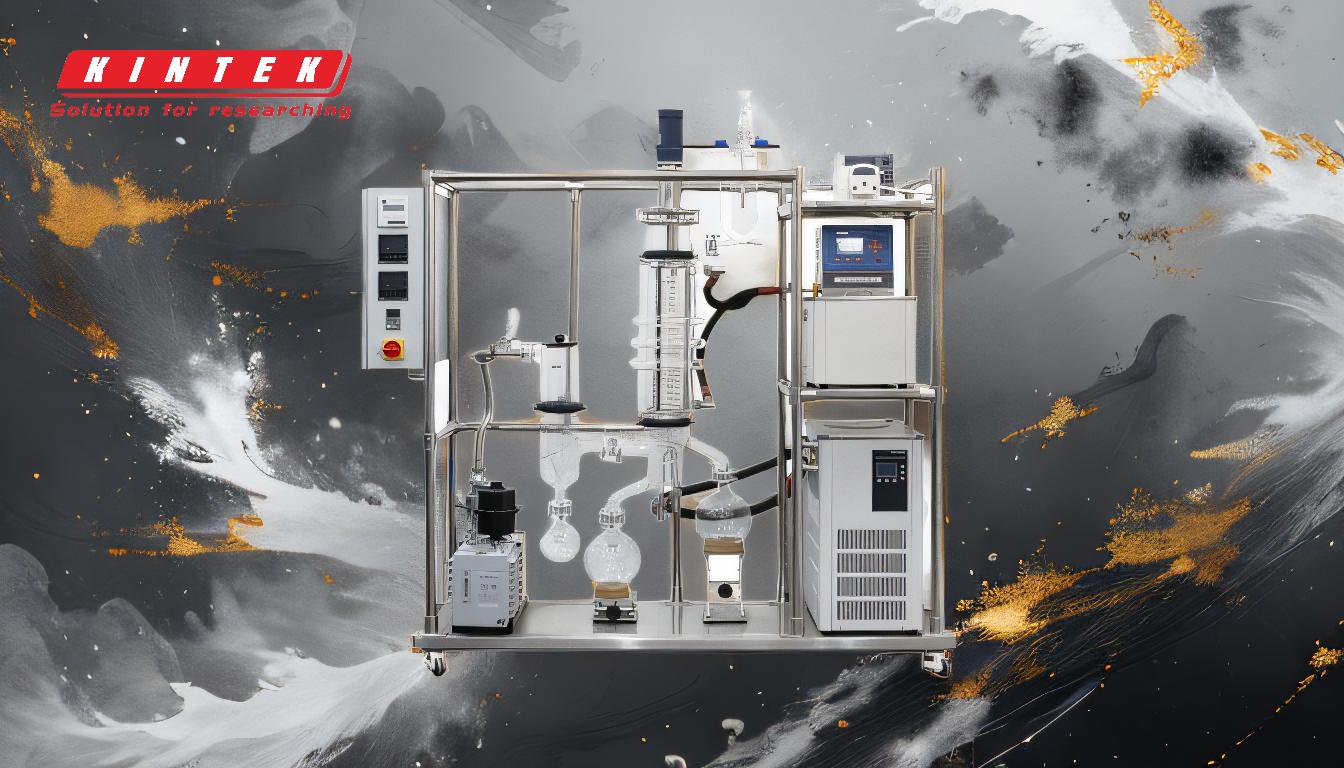Distillation is a widely used separation process that involves heating a liquid mixture to create vapor and then cooling the vapor to obtain a purified liquid. It is employed in various industries and applications, ranging from water purification to the production of alcoholic beverages and essential oils. Five notable examples of distillation include simple distillation, fractional distillation, steam distillation, vacuum distillation, and short path distillation. Each method is tailored to specific applications, such as separating liquids with different boiling points, extracting heat-sensitive compounds, or achieving high purity in industrial processes. Below, we explore these examples in detail, highlighting their unique characteristics and applications.
Key Points Explained:

-
Simple Distillation
- Process: Simple distillation involves heating a liquid mixture to its boiling point, collecting the vapor, and condensing it back into a liquid. It is suitable for separating liquids with significantly different boiling points.
- Applications: Commonly used in laboratories for purifying solvents and in the production of distilled water. It is also employed in the initial stages of refining crude oil.
- Advantages: Simple and cost-effective for basic separation tasks.
- Limitations: Not suitable for mixtures with components that have similar boiling points or for heat-sensitive compounds.
-
Fractional Distillation
- Process: Fractional distillation uses a fractionating column to separate components of a liquid mixture based on their boiling points. The column provides multiple vaporization-condensation cycles, enhancing separation efficiency.
- Applications: Widely used in the petroleum industry to separate crude oil into fractions like gasoline, diesel, and kerosene. It is also used in the production of alcoholic beverages.
- Advantages: Highly effective for separating complex mixtures with closely spaced boiling points.
- Limitations: Requires more complex equipment and energy compared to simple distillation.
-
Steam Distillation
- Process: Steam distillation involves passing steam through a mixture to vaporize heat-sensitive compounds, which are then condensed and collected. This method is particularly useful for extracting essential oils and other volatile compounds.
- Applications: Used in the production of perfumes, food flavorings, and essential oils from herbs and plants. It is also employed in the pharmaceutical industry for extracting active ingredients.
- Advantages: Gentle on heat-sensitive compounds and avoids thermal degradation.
- Limitations: Requires a steam source and is less efficient for non-volatile components.
-
Vacuum Distillation
- Process: Vacuum distillation operates under reduced pressure, lowering the boiling points of the components in the mixture. This method is ideal for separating compounds that degrade at high temperatures.
- Applications: Commonly used in the chemical and pharmaceutical industries to purify heat-sensitive substances. It is also employed in the refining of heavy crude oil fractions.
- Advantages: Prevents thermal decomposition of sensitive compounds and reduces energy consumption.
- Limitations: Requires specialized equipment to maintain a vacuum and is more complex to operate.
-
Short Path Distillation
- Process: Short path distillation involves evaporating a liquid under vacuum and condensing the vapor over a short distance, minimizing the exposure of the compound to heat. It is a single-stage distillation method.
- Applications: Used in the purification of high-value compounds, such as cannabinoids, essential oils, and pharmaceutical intermediates. It is also employed in the production of high-purity chemicals.
- Advantages: Efficient for small-scale, high-purity separations and minimizes thermal degradation.
- Limitations: Limited to small-scale operations and requires precise control of vacuum conditions.
These examples illustrate the versatility of distillation techniques across various industries. Each method is tailored to specific needs, whether it’s achieving high purity, handling heat-sensitive materials, or separating complex mixtures. Understanding these methods helps in selecting the appropriate distillation process for a given application, ensuring efficiency and product quality.
Summary Table:
| Method | Process Overview | Applications | Advantages | Limitations |
|---|---|---|---|---|
| Simple Distillation | Heats liquid to boiling point, collects and condenses vapor. | Purifying solvents, distilled water, crude oil refining. | Simple and cost-effective. | Not suitable for similar boiling points or heat-sensitive compounds. |
| Fractional Distillation | Uses a fractionating column for multiple vaporization-condensation cycles. | Petroleum refining (gasoline, diesel), alcoholic beverage production. | Effective for complex mixtures with close boiling points. | Requires complex equipment and more energy. |
| Steam Distillation | Passes steam through a mixture to vaporize heat-sensitive compounds. | Perfumes, food flavorings, essential oils, pharmaceutical extracts. | Gentle on heat-sensitive compounds, avoids thermal degradation. | Requires steam source, less efficient for non-volatile components. |
| Vacuum Distillation | Operates under reduced pressure to lower boiling points. | Purifying heat-sensitive substances, refining heavy crude oil fractions. | Prevents thermal decomposition, reduces energy consumption. | Requires specialized vacuum equipment, complex to operate. |
| Short Path Distillation | Evaporates liquid under vacuum, condenses vapor over a short distance. | Purifying cannabinoids, essential oils, pharmaceutical intermediates. | Efficient for small-scale, high-purity separations, minimizes degradation. | Limited to small-scale operations, requires precise vacuum control. |
Need help choosing the right distillation method for your application? Contact our experts today!










